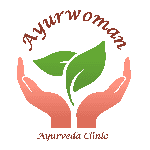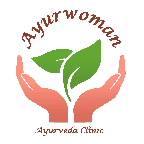Abhyanga Massage
Abhyanga is the traditional name for ayurvedic therapeutic oil massage. Abhyanga is an integral part of Panchakarma routine. Abhyanga is essentially a massage and can also be done stand alone as a wellness therapy. Abhyanga is almost always done using ayurvedic oils matching the dosha type of the individual and the doshas involved in the illness of the individual.
Some of the common oils used in abhyanga are Dhanwantharam Oil, Maha Narayana oil, Kottamchukkadi Oil, Karpsasthyadi etc. Right oil for a situation has been explained in classical Ayurveda texts. One of the best source for the modern day ayurveda enthusiast can be found here.
Abhyanga is a step or a phase in an ayurvedic treatment regime, and so there are no strict rules on how to perform this therapeutic massage. Practitioners normally customise Abhyanga to the specific situation.
Ayurvedic practitioners who belong to the yoga school of thought follow yoga principles and thus give more importance to Nadis while practitioners of Kalari school of thought provide more importance to marma or vital points.
Traditional Abhyanga evolved in present day Kerala. Kerala Abhyanga as is practiced today uses more oil and herbal poultice and goes through seven steps. These are also known as seven steps of Abhyanga. Thus Abhyanga is sometimes referred to as Kerala Ayurveda Massage.
When we go deep into Ayurveda theory, we can see that Abhyanga derives its origins from Snehana. Sneh is a Sanskrit word and means Oil and indicates oiliness or lubrication. Thus Snehana therapy can be loosely explained as an oil therapy or lubrication therapy.
Snehana or Oleation is of two types – Internal Snehana and External Snehana. Consuming medicated oils as part of treatment is Internal Snehana and is called Sneha Pana. Literal Sanskrit translation of Sneha Pana is drinking oil. External Snehana is Abhyanga.
External Snehana is a pre-operative procedure in every Panchakarma program. The main aim of external Snehana is to prepare the body for purification. Abhyanga thus brings the vitiated doshas adherent in peripheral tissues to the gut for easy and quick expulsion by excretion.
Seven positions of Abhyanga
Classical Ayurveda texts describe the following seven steps or phases to perform this therapeutic massage:
-
- Sitting upright
- Lying – back
- Lying – Lateral – Left
- Lying – back
- Lying – Lateral – Right
- Lying – back
- Sitting upright
Therapist performs oil massage on the patient while patient adopts each of the above postures in sequence. On each step, the therapist carries out a gentle massage for about fifteen minutes.
As listed above, the procedure starts with therapist massaging the patient while the person is sitting erect. Then the process moves to lie down face up, then in left lateral position, then lying on back again then right lateral then lying on back again and finally sitting erect to complete the cycle.
Pre-operative procedures
The therapist or the practitioner should explain the entire procedure to the patient in a simple language so that the patient gets a good understanding of the process, and also they co-operate fully during the therapy. Make sure the patient has evacuated their bowel and bladder. Apply a little bit of therapeutic oil on their vertex and do 2-3 minutes massage.
Core procedure of Abhyanga
The core therapy comprises seven stages, and in each stage, the therapist performs massage on the patient while the patient adopts a sitting or lying posture.
The procedure starts with therapist performing massage while the patient is seated upright on a massage table or a stool. Apply massage oil to the head, face, ear canal, the front of neck, back and feet and massage in a gentle fashion for about ten to fifteen minutes.
The patient then changes the posture to lying left sideways, lying face down, lying right sideways, lying face up and finally the upright position to complete the cycle.
Perform massage in each posture for about 15 minutes. The whole process can take about an hour or more depending on your particular situation. Vary the treatment duration as necessary. Increase or decrease the treatment duration to suit the particular condition or the health of the patient.
Post operative procedures of abhyanga
Wipe the patient’s body with a dry and clean towel. Leaving a thin film of oil is also good. Ask the patient to rest for 30 minutes to one hour and have a warm shower afterward. A steam bath can be beneficial at this stage but not an infrared Sauna.
Benefits of Abhyanga
Applying warm ayurvedic medicated oil promotes circulation and helps diaphoresis (sweating). Abhyanga helps the skin absorb the medicinal properties of the oil. These therapeutic factors act as food, nutrient and medicinal agent on the skin. A soft and oily massage itself has a soothing effect on the nervous system as a whole. It removes metabolic waste, reduces pain and swelling, improves complexion and texture of the skin.
Abhyanga is an integral part of any Panchakarma program. Abhyanga can be done as a stand-alone cleanse therapy in the Ayurvedic treatment of endometriosis. Panchakarma is very beneficial in managing Lyme disease.
Ayurvedic Oils used in abhyanga
Many therapists use organic sesame oil for treatment. But for right results make sure that you chose the appropriate oil based on one’s dosha.
Choice of Abhyanga oil is critical.
Select oil based on patients dosha. Consider the patient’s illness and the dosha interaction while deciding the oil for best results. There may be situations where you will require not one but a combination of oils. Do not compromise on oil selection for Abhyanga. Optimal oil selection is of utmost importance for this therapeutic massage to deliver desired results.


